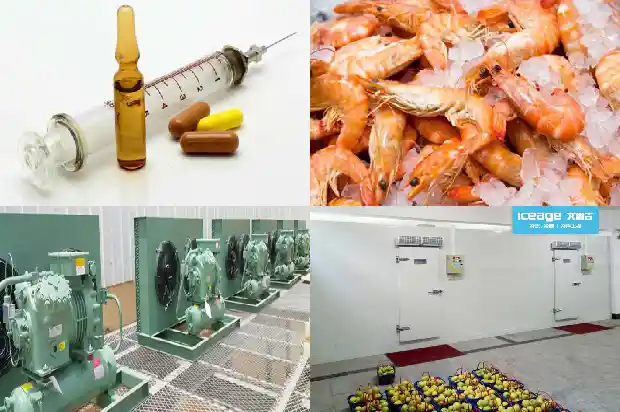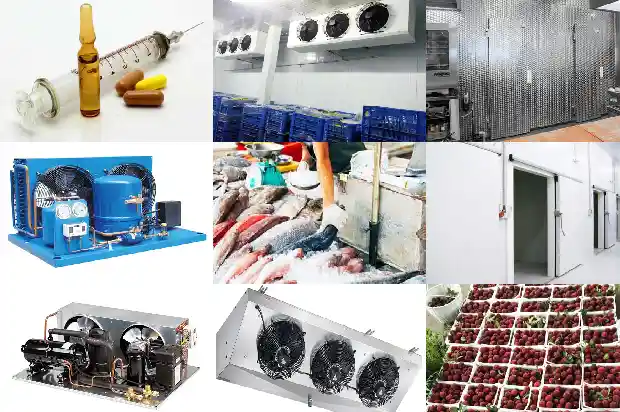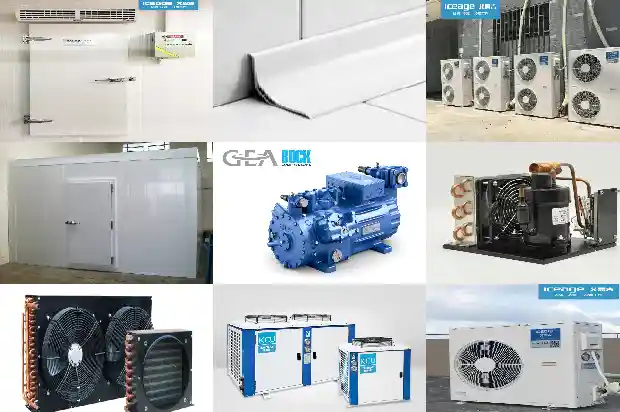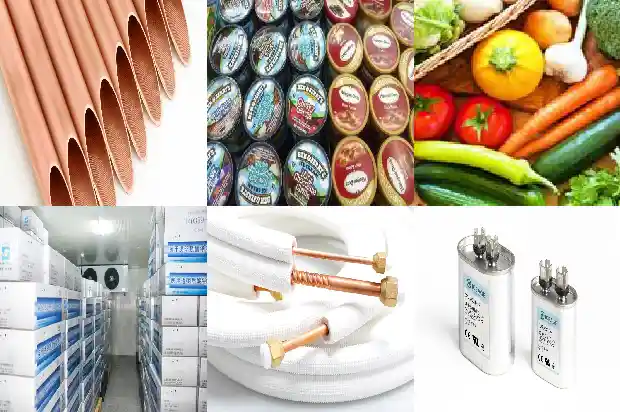Key Component of Air Source Heat Pump - Four-way Valve
2024-09-19
Refrigeration is the removal of heat from an unwanted environment and then discharging it into another environment. So an air source heat pump is actually a refrigeration device. It is a refrigeration system that can transfer heat in both directions by discharging heat into a designated environment. It can provide heating and cooling. It is usually used as an indoor air conditioner.
The refrigeration device of the compression cycle is composed of four major components: compressor, evaporator, condenser, and metering device (expansion valve, capillary). In a heat pump, a four-way valve for controlling the direction of heat flow is also needed. When switching from the cooling mode to the heating mode through the reversing of the four-way valve, the indoor evaporator becomes a condenser, and the outdoor condenser becomes an evaporator. Therefore, the heat pump is also called a "reverse cycle heat pump". Now let's learn about the four-way valve together.
As an important part in heat pump air conditioners, the four-way valve plays a role in changing the flow direction of the refrigerant in the air conditioning system, enabling the air conditioner to achieve cooling and heating functions without adding other heating elements. It is the most complex and precise component in the refrigeration system except for the compressor in terms of technology. It is also the most troublesome component to replace and requires the highest welding technology. Due to the fact that it mainly has four pipes in its structure, it is called a four-way valve.
The types of four-way valves include forced reversing type, unloading reversing type, no dead point reversing type, rotary reversing type, and other types.
Among the four connecting pipes of the four-way reversing valve, three are on the same side of the valve body. The middle connecting pipe is connected to the suction pipe of the compressor. The other two are connected to the indoor and outdoor heat exchangers. The other connecting pipe is on the other side of the valve body and is connected to the exhaust pipe of the compressor. There is a semicircular slider and two pistons with small holes in the valve body. The slider can move left and right in the valve body, so that the two connecting pipes on the lower side are connected through the two valve holes covered by the slider. Another connecting pipe on the lower side is communicated with the valve body through another valve hole. The piston and the slider are connected together through a valve frame and can move synchronously.
As a special component that can realize bidirectional pumping of heat, the four-way valve is controlled by the position set by the selection switch on the indoor thermostat. The specific principle is that the heat absorbed by the refrigeration system moves within the system through the compressor, is concentrated and condensed in the discharged vapor, and then the four-way valve switches to change the flow direction of the discharged vapor and heat. In the cooling state, the four-way valve is not energized, AD is connected, and BC is connected. In the heating state, the four-way valve is energized, the piston moves to the right, so that AB is connected and CD is connected.
The four-way valve is actually two valves assembled in the same valve body. It is composed of four identical one-way valves in total and functions to convert between cooling and heating. If the direction is installed incorrectly, cooling and heating cannot be converted to each other, and cooling or heating cannot be performed. Its control circuit controls the small solenoid valve connected to the outside of the valve body through a small pipeline. This small valve controls the flow direction inside the large valve body and is also called a pilot valve.
The piston in the valve body of the four-way valve slides relying on a nylon sealing ring. Since the melting point of the nylon sealing ring is very low, be sure to keep it at as low a temperature as possible during welding. For example, heat dissipation glue can be used, or the valve body can be wrapped with a wet cloth and water can be continuously dripped onto the cloth strip to keep the valve body at a lower temperature.
Possible reasons for the four-way valve not operating normally are:
- The valve core is stuck in the heating or cooling position and cannot be switched or returned normally.
- The electromagnetic coil is burned out. It needs to be checked and removed and the coil replaced.
- There is internal leakage in the valve body. A high-quality thermometer is needed to detect the temperature of the low-pressure side pipeline, the suction pipe from the evaporator, and the suction pipe between the valve and the compressor. The temperature difference should not exceed about -16°C.
- The refrigeration oil deteriorates or foreign matter enters the system, and the piston of the four-way valve is jammed.
Generally, the steps for inspecting the four-way valve are as follows:
- Check the power supply circuit of the four-way valve. The air conditioner supplies power to the four-way valve only when it is in heating operation. Through power supply inspection, it can be determined whether it is a problem with the four-way valve or the control circuit.
- Check the four-way valve coil.
After confirming normal power supply, check whether the coil is normal. When the coil is energized, the "click" sound generated by the core being attracted should be heard, and at the same time, the "hissing" sound generated by the main valve reversing should also be heard. When there is suspicion of a problem with the coil, its resistance can be measured. Normally, it should be around 1.4KΩ. If the resistance value is very small or infinite, it indicates that there is a short circuit or open circuit inside the coil. When the coil is open-circuited, cooling is normal, but heating is not possible, and the evaporator of the indoor unit frosts. When the coil is short-circuited and the unit is turned on for heating, the fuse may be burned, making the whole unit unable to work.

- Check the main valve. By checking the temperature of the refrigerant entering and leaving the main valve, it can be judged whether the main valve is normal. When the air conditioner is operating in cooling mode, D is connected to C and connected to the compressor exhaust port. E is connected to S and connected to the evaporator return air (relatively cold). When operating in heating mode, D is connected to E and connected to the compressor exhaust port (relatively hot). E is connected to C and connected to the condenser return air (relatively cold).
- When the four-way valve is cross-ventilated, the temperature difference between E, S, and C may not be obvious, and the return air pressure rises close to the exhaust pressure. Don't be in a hurry to replace the four-way valve. First check whether the system is short of fluorine.
Because lack of fluorine often leads to the inability to establish a pressure difference. The four-way valve cannot reverse normally. At this time, an appropriate amount of refrigerant should be injected, and then see if the reversing is normal. If it is still not normal, the valve body can be gently tapped and the power can be turned on and off repeatedly. If it is slightly jammed, it can generally return to normal. If it is still not normal, replace the four-way valve.
When replacing the four-way valve, the following precautions should be taken:
- If the four-way valve is slightly jammed and the reversing is not smooth, don't rashly replace it.
You can repeatedly turn the power on and off to the coil or gently tap the valve body to force the slider to move.
- Before replacement, slowly release the refrigerant in the system, fill the system with nitrogen, and weld off the four-way valve.
- The poor reversing of the four-way valve is often caused by impurities in the system. When the four-way valve is damaged, it cannot be simply replaced without addressing the root cause. The cause should be found. For example, when disassembling the four-way valve, observe the color of the refrigeration oil. If the oil has changed color and contains impurities, the system should be cleaned with high-pressure nitrogen. If necessary, the refrigeration oil should also be replaced. Otherwise, the newly replaced four-way valve may soon be jammed again.
- During welding, nitrogen should be filled into the system. The four-way valve should be wrapped with a wet towel. First weld the exhaust pipe of the compressor, then weld the compressor return pipe in the middle of the three parallel pipes, and finally weld the connecting pipes on both sides to the evaporator and condenser.
- After the welding is completed and the valve body cools down, fill high-pressure nitrogen to check for leaks in the system. After ensuring that there are no leaks at each welding point, vacuum and add fluorine.
Related Articles
- Principles, Components and Heat Recovery of Modular Units
- Basic Knowledge of Valve - type Components in Refrigeration Systems (Technical Sharing)
- Analysis of 6 Components in Air - cooled Multi - split Systems
- Analysis of Advantages, Disadvantages and 34 Common Components of Multi - split Air Conditioners
- Are you familiar with the detection and maintenance methods of air conditioner components?
- Top Ten Components of Refrigeration Systems and Five Common Troubleshooting!
- Refrigeration System Circulation and Components for Freezing and Cold Storage
- Principles of Refrigeration Systems and Functions of Components Explained
- Defrosting Operation Modes of Refrigeration Equipment and Its Control Components
- Refrigeration System Components and Common Failures
- Structural Components of Centrifugal Compressor
- The Structure and Components of Centrifugal Compressors
- Introduction to the Components of a Cold Storage Unit and Common Issues in Cold Storage Units
- Water-cooled Split Air Conditioner Unit: Components and Installation
- Influence of Fin Spacing of Evaporator in Air Cooler on Frost Formation
- Air - side Economizer
- Winter Approaches: How to Solve the Low High - pressure Issue of Air - cooled Condensing Units?
- What Are the Common Causes of Cold Air Blower Noise?
